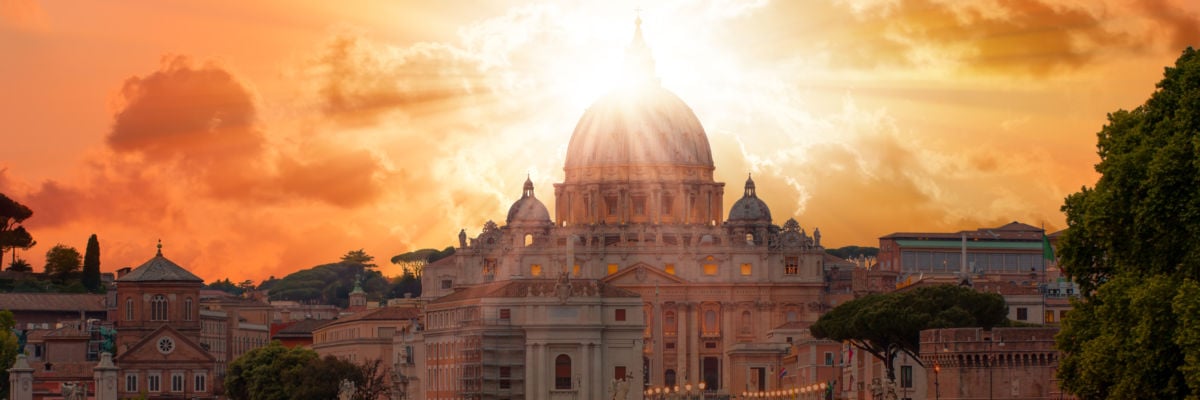

Apostolic See, THE (sedes apostolica, cathedra apostolica). This is a metaphorical term, used, as happens in all languages, to express the abstract notion of authority by the concrete name of the place in which it is exercised. Such phrases have the double advantage of supplying a convenient sense-image for an idea purely intellectual and of exactly defining the nature of the authority by the addition of a single adjective. An Apostolic see is any see founded by an Apostle and having the authority of its founder; the Apostolic See is the seat of authority in the Roman Church, continuing the Apostolic functions of Peter, the chief of the Apostles. Heresy and barbarian violence swept away all the particular Churches which could lay claim to an Apostolic see, until Rome alone remained; to Rome, therefore, the term applies as a proper name. But before heresy, schism, and barbarian invasions had done their work, as early as the fourth century, the Roman See was already the Apostolic See par excellence, not only in the West but also in the East. Antioch, Alexandria, and, in a lesser degree, Jerusalem were called Apostolic sees by reason of their first occupants, Peter, Mark, and James, from whom they derived their patriarchal honor and jurisdiction; but Rome is the Apostolic See, because its occupant perpetuates the apostolate of Blessed Peter extending over the whole Church. Hence also the title Apostolicus, formerly applied to bishops and metropolitans, was gradually restricted to the Pope of Rome, the Domnus Apostolicus, who still figures in the Litany of the Saints at the head of the ecclesiastical hierarchy. The authoritative acts of the popes, inasmuch as they are the exercise of their Apostolical power, are styled acts of the Holy or Apostolic See. The See is thus personified as the representative of the Prince of the Apostles, as in Pope Leo II’s confirmation of the Sixth General Council (Constantinople, 680-681): “Ideirco et Nos et per nostrum officium haec veneranda Sedes Apostolica his qumu definita sunt, consentit, et beati Petri Apostoli auctoritate confirmat.” (Therefore We also and through our office this venerable Apostolic See give assent to the things that have been defined, and confirm them by the authority of the Blessed Apostle Peter.) It is a fact worthy of notice that, in later times, all those who wished to minimize the papal authority, Protestants, Gallicans, etc., used the term Curia (Roman Court) in preference to “Apostolic See“, seeking thus to evade the dogmatic significance of the latter term. The cathedra Petri, the Chair of St. Peter, is but another expression for the sedes apostolica, cathedra denoting the chair of the teacher. Hence the limitation of papal infallibility to definitions ex cathedra amounts to this: papal definitions can claim inerrancy or infallibility only when pronounced by the pope as the holder of the privileges granted by Christ to Peter, the Rock upon which He built His Church. The same formula conveys the meaning that the pope’s infallibility is not personal, but derived from, and coextensive with, his office of visible Head of the Universal Church, in virtue of which he sits in the Chair of Peter as Shepherd and Teacher of all Christians. (See Infallibility.) From ancient times a distinction has been made between the Apostolic See and its actual occupant: between sedes and sedens. The object of the distinction is not to discriminate between the two nor to subordinate one to the other, but rather to set forth their intimate connection. The See is the symbol of the highest papal authority; it is, by its nature, permanent, whereas its occupant holds that authority but for a time and inasmuch as he sits in the Chair of Peter. It further implies that the supreme authority is a supernatural gift, the same in all successive holders, independent of their personal worth, and inseparable from their ex-officio definitions and decisions. The Vatican definition of the pope’s infallibility when speaking ex cathedra does not permit of the sense attached to the distinction of sedes and sedens by the Gallicans, who claimed that even in the official use of the authority vested in the See, with explicit declaration of its exercise, the sedens was separate from the sedes.
J. WILHELM


